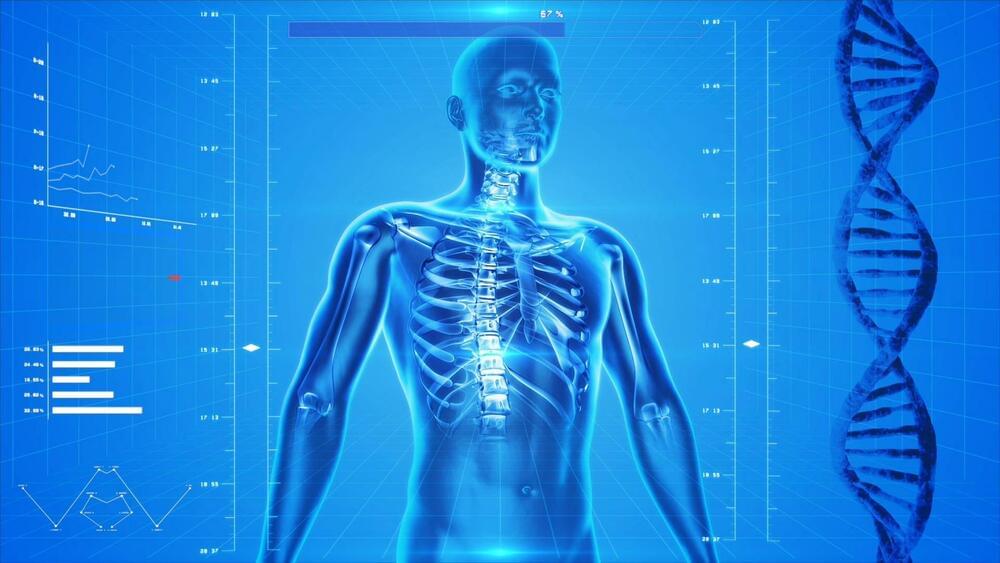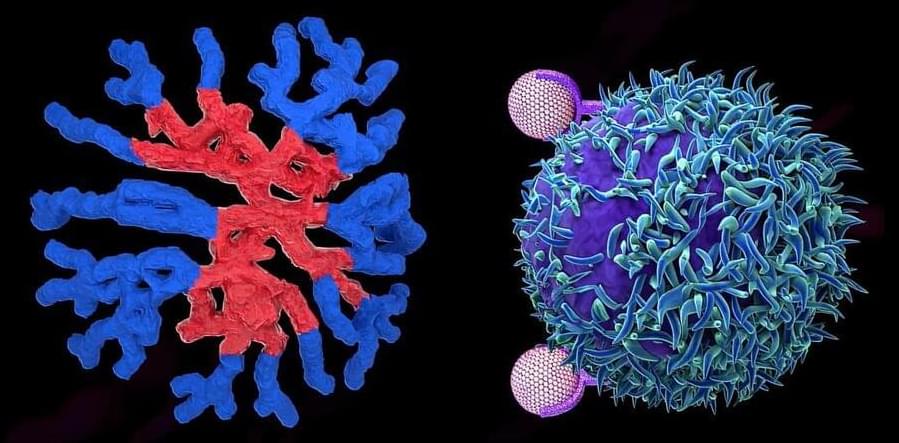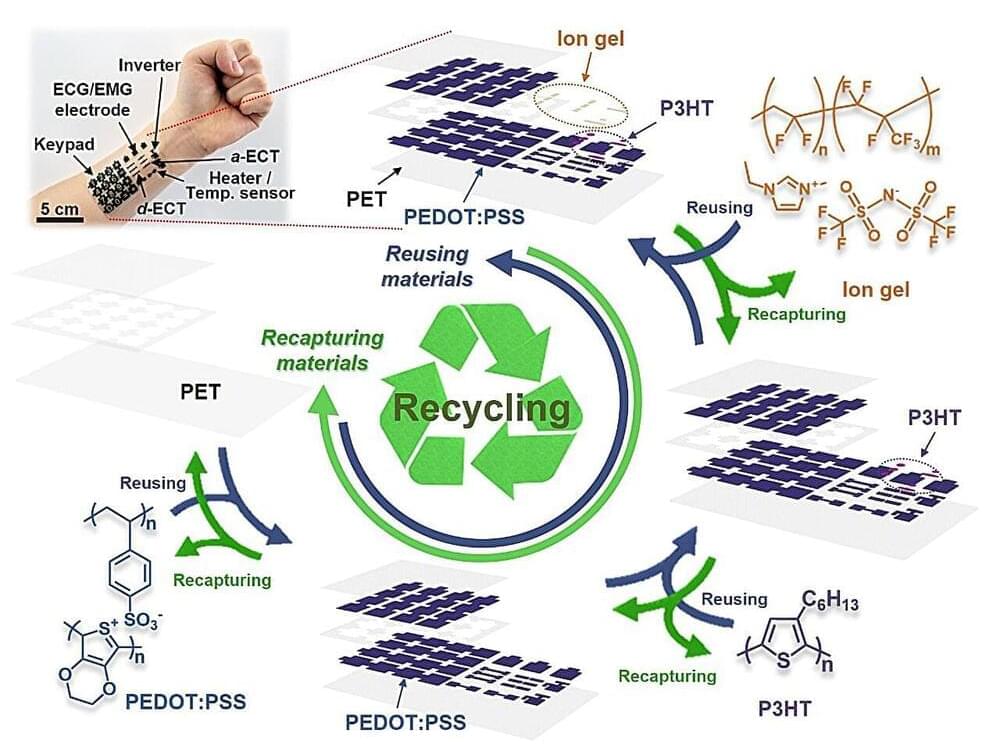The device uses a silicone-based muscle replacement to pump blood, and you can see it in action.
Category: biotech/medical – Page 798

Unexpected Genetic Discovery Opens New Opportunities for Human Health
An unexpected genetic discovery in wheat has led to opportunities for the metabolic engineering of versatile compounds with the potential to improve its nutritional qualities and resilience to disease.
Researchers in the Osbourn group at the John Innes Centre have been investigating biosynthetic gene clusters in wheat – groups of genes that are co-localized on the genome and work together to produce specific molecules.

Breakthrough in gene editing: Enhanced virus-like particles promise new era in genetic disease treatment
Background: The Promise of Prime Editing
Prime editing is a promising technology for changing genomic deoxyribonucleic acid (DNA) that has the potential to be used to cure genetic diseases in individuals. Prime editors are proteins that can replace a specific deoxyribonucleic acid sequence with another. PE systems necessitate three distinct nucleic acid hybridizations and are not dependent on double-strand deoxyribonucleic acid breaks or donor deoxyribonucleic acid templates.
Researchers must devise efficient and safe techniques to deliver prime editors in tissues in the in vivo settings to fulfill PE’s objective. While viral delivery techniques such as adenoviruses and adeno-associated viruses (AAVs) can transport PE in vivo, non-viral delivery techniques like lipid nanoparticles can sidestep these concerns by packaging PEs as temporarily expressing messenger ribonucleic acids.


Antibody Removes Abnormal Proteins from Cancer Cells
Antibodies are used in many kinds of cancer treatments but have only been able to reach proteins on the outside of cancer cells—until now. According to a new study, scientists have designed antibodies that can barge into cancer cells and drag abnormal proteins out, ultimately slowing tumor growth in mice.
The approach is a novel way of targeting cancer-fueling proteins that are buried inside cancer cells, several experts said.
Most antibodies can’t get inside cells. Yet most cancer-fueling proteins are tucked deep inside cancer cells. One type of antibody, however, called IgA, can glide through certain cells like a ghost walking through a wall.

Lung Cancer Death Rates Continue to Decline
NCI researchers have found a persistent decline in rates of both smoking-related and non-smoking-related lung cancer deaths.
In the U.S., lung cancer death rates have declined for decades, primarily due to decreases in cigarette smoking. However, it is unclear whether rates of smoking-unrelated lung cancer deaths are also decreasing. If the rates are increasing, that may suggest increases in exposure to other lung carcinogens that need to be investigated. Meredith Shiels, Ph.D., M.H.S., senior investigator in the Infections and Immunoepidemiology Branch, and colleagues in the Biostatistics Branch, the Division of Cancer Control and Population Sciences, and Information Management Services, conducted a study to estimate trends in U.S. lung cancer death rates from 1991–2018. They found that both smoking-attributable and smoking-unrelated lung cancer death rates declined over this period. The findings were published in the Journal of the National Cancer Institute on December 9, 2023.
Cancer registries and death certificates do not collect the smoking status of every person diagnosed with or who died from lung cancer. Thus, to estimate trends in lung cancer death rates by smoking status, the researchers needed another way to determine the age-specific trends in lung cancer deaths attributed to smoking, and unrelated to smoking. They estimated age-specific annual percentage of lung cancer deaths that could be attributed to smoking using smoking status data from the National Health Interview Survey linked to death certificate data. These population attributable fractions were then multiplied by national data on lung cancer mortality to estimate trends over time in smoking-attributable and smoking-unrelated deaths. The researchers found that the fraction of lung cancer deaths attributable to smoking decreased from 82% in 1991 to 75% in 2018. Over this same period, smoking-attributable lung cancer death rates declined 2.
The 5th Industrial Revolution as an engine for human longevity
Before delving into the prospects of the Fifth Industrial Revolution, let’s reflect on the legacy of its predecessor. The Fourth Industrial Revolution, characterised by the fusion of digital, physical, and biological systems, has already transformed the way we live and work. It brought us AI, blockchain, the Internet of Things, and more. However, it also raised concerns about automation’s impact on employment and privacy, leaving us with a mixed legacy.
The promise of the Fifth Industrial Revolution.
The Fifth Industrial Revolution represents a quantum leap forward. At its core, it combines AI, advanced biotechnology, nanotechnology, and quantum computing to usher in a new era of possibilities. One of its most compelling promises is the extension of human life. With breakthroughs in genetic engineering, regenerative medicine, and AI-driven healthcare, we are inching closer to not just treating diseases but preventing them altogether. It’s a vision where aging is not an inevitability, but a challenge to overcome.


A new method to develop recyclable, organic and flexible electronics
The electronics industry has been in continuous development over the past decades, leading to the development, fabrication and sale of a broad range of consumer devices. In recent years, many engineers have been focusing their efforts on flexible electronics that can be used to create wearable devices, such as smartwatches, earbuds, fitness trackers, and even smart jewelry, and electronic implants for medical applications.
While significant progress has been made towards the development of flexible electronics, the widespread commercialization of a growing number of electronics has raised significant concerns related to their sustainability. Some research teams have thus been trying to identify environmentally-friendly materials and fabrication strategies, which could mitigate the adverse impact of the electronics industry on the planet.
Researchers at Ulsan National Institute of Science and Technology (UNIST) in South Korea recently introduced a new method to create organic and flexible electronic devices with recyclable components. This method, outlined in a paper in Nature Electronics, relies on reusable materials and eco-friendly solvents that have a minimal impact on the environment.
